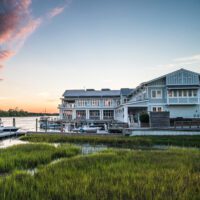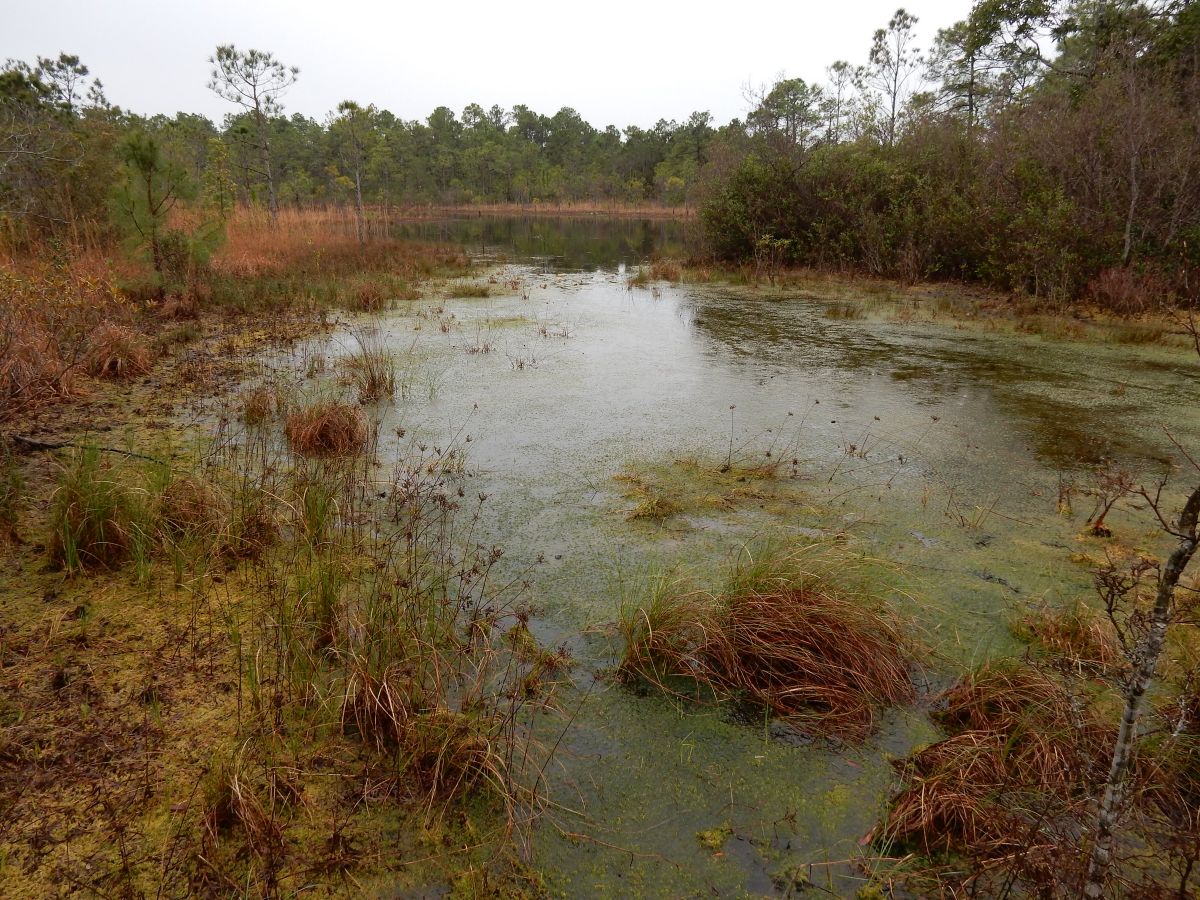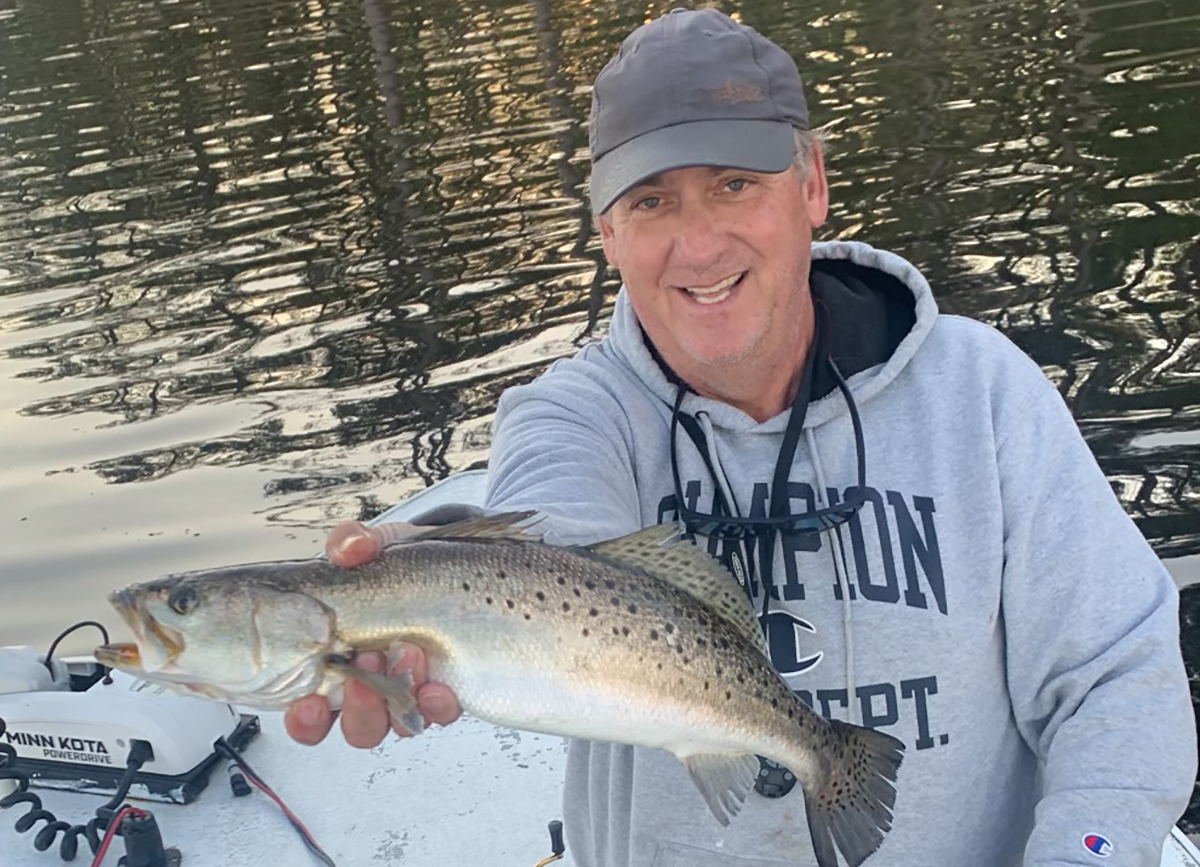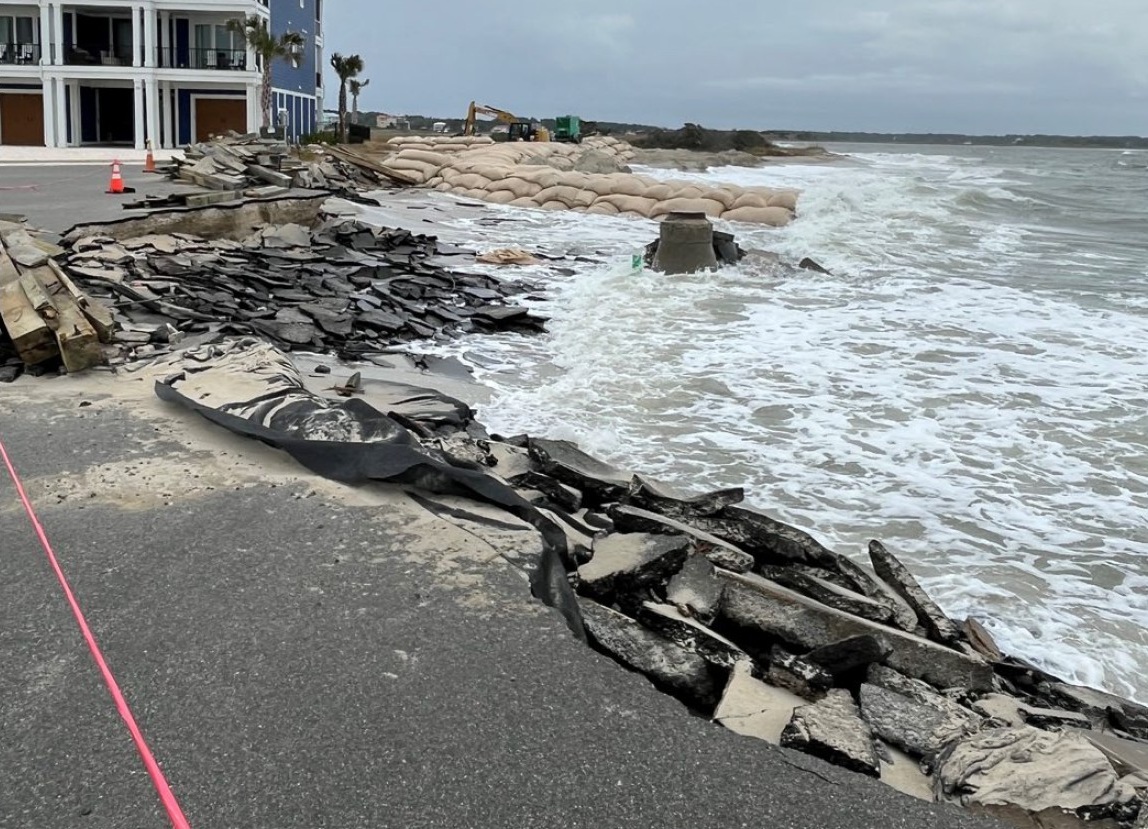
BEAUFORT – Owners of vacant oceanfront lots being chewed by erosion at the eastern tip of Ocean Isle Beach have been permitted to install larger than typically allowed sandbag structures at the beach to protect their properties.
The North Carolina Coastal Resources Commission unanimously agreed last week to grant permission to the owners of eight lots in The Pointe, a luxury gated neighborhood built east of the town’s terminal groin, to have sandbag structures that are 40 feet wide and 12 feet tall placed waterward of their land.
Supporter Spotlight
Current commission rules limit sandbag revetments to a 20-foot base width and a 6-foot height. The rules also stipulate sandbags may be placed only in areas where erosion scarp is within 20 feet from a structure.
The new, larger sandbag structures will connect to two revetments installed along developed lots this past summer, creating one, long contiguous sandbag wall along at the eastern tip of the Brunswick County barrier island at Shallotte Inlet.
Charles Baldwin IV, the Wilmington-based attorney representing the property owners, explained Wednesday during the meeting in Beaufort Hotel that his clients want to “simply connect the dots” and “try to avoid irreparable harm.”
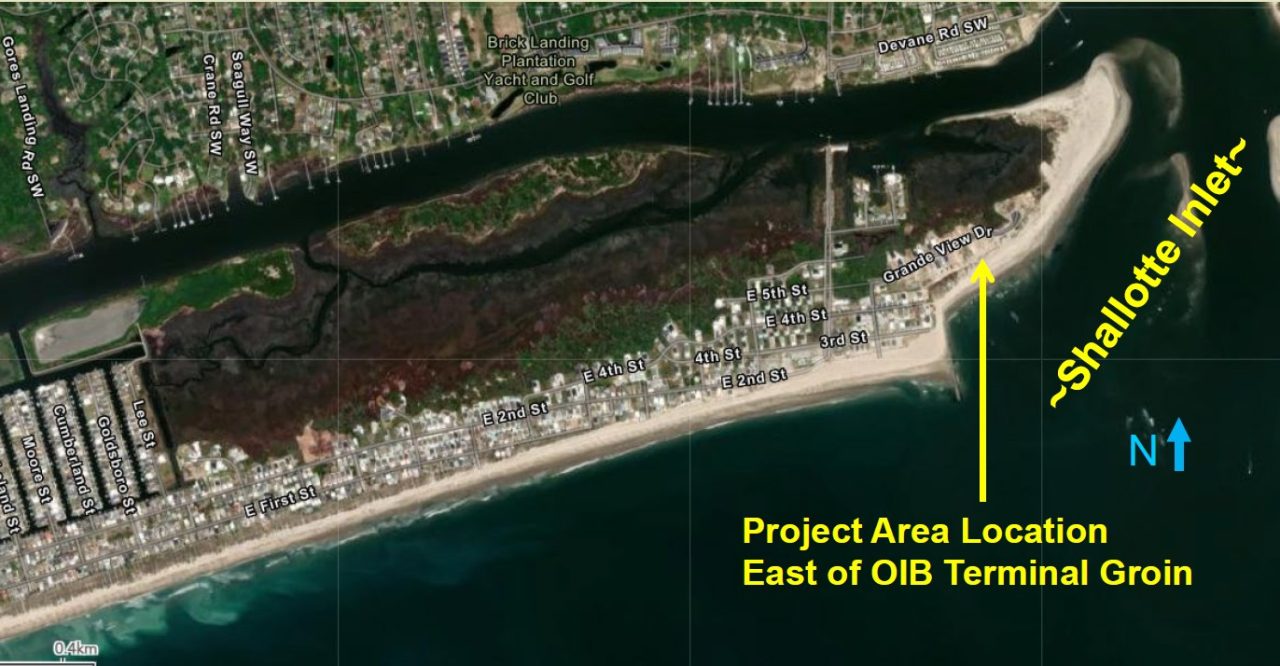
“It needs to be a unified wall,” he said. “You can’t throw one person out and expect this project to go forward and work.”
Baldwin’s clients attribute the plight of their properties to the terminal groin the town had installed more than three years ago to stave off erosion that had battered Ocea Isle’s east end for decades.
Supporter Spotlight
“Obviously what we have is a unique situation here,” he said in his initial remarks to the commission. “We have these lots that are being affected negatively by the terminal groin.”
Terminal groins are wall-like structures built perpendicular to the shore at inlets to contain sand in areas of high erosion.
Baldwin noted that both state law and the town’s permit to build the terminal groin “say that if the groin doesn’t perform, and it’s required to monitor, has adverse effects, it has to be modified or removed.”
“That’s because that’s the law,” he said.
Baldwin went on to argue that a decision by the United States Court of Appeals for the Fourth Circuit said the terminal groin might contribute to “some short-term erosion” east of the structure, “but that within year one it’s going to stabilize.”
“That has not happened,” Baldwin said. “Their lots are already being substantially diminished, but this structure out there is just simply failing.”
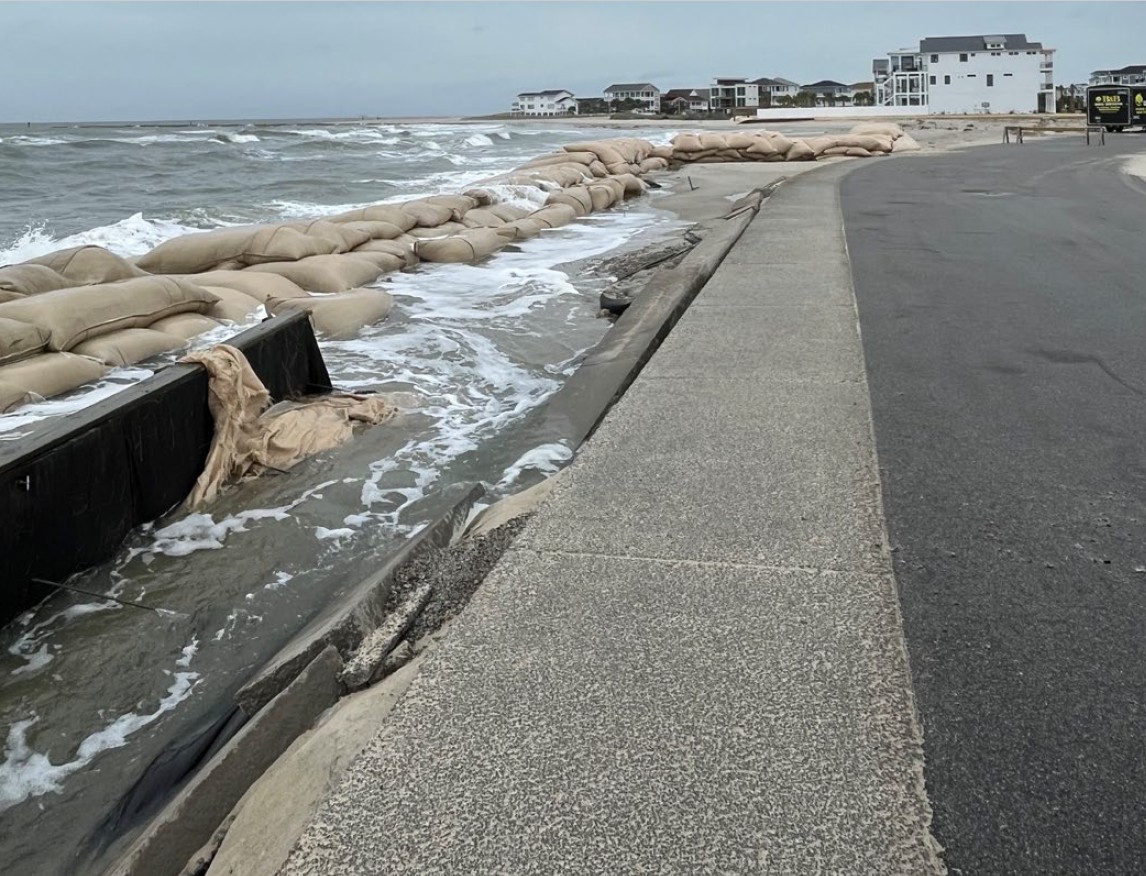
Ocean Isle Beach officials have refuted that claim.
In a letter Coastal Review published last month, Ocean Isle Beach Mayor Debbie Smith wrote that The Pointe’s developer went before the town’s planning board in June 2015. The developer purchased the property in September of that same year.
By that time, both a draft and final environmental impact statement on the terminal groin had been published, and a public workshop on the terminal groin had taken place, Smith wrote.
The town received a Coastal Area Management Act, or CAMA, permit in November 2016 to build the structure.
But construction was pushed back years after the Southern Environmental Law Center, on behalf of the National Audubon Society, filed a lawsuit challenging the U.S. Army Corps of Engineers’ approval of the project.
The lawsuit claimed that the Corps failed to objectively evaluate alternatives to the terminal groin, including those that would be less costly to Ocean Isle residents and less destructive to the coast, particularly what was then the undeveloped area on the island’s east end.
In March 2021, a panel of judges with the Fourth Circuit, affirmed a lower court’s decision that the Corps fairly considered the alternatives.
Construction of the $11 million terminal groin was complete in April the following year.
The final subdivision approval was granted to The Pointe’s developer in 2022, after which time construction began in the 44-lot neighborhood.
A series of offshore coastal storms that have skirted the East Coast the latter half of this year have further contributed to the threat to The Pointe’s oceanfront properties.
Erosion has swiped away chunks of the private road that rounds to lots at a cul-de-sac nearest the ocean entrance to the inlet. Piles of debris, including wood from an old bulkhead unearthed by the erosion, has been described as a scene akin to that of a war zone.
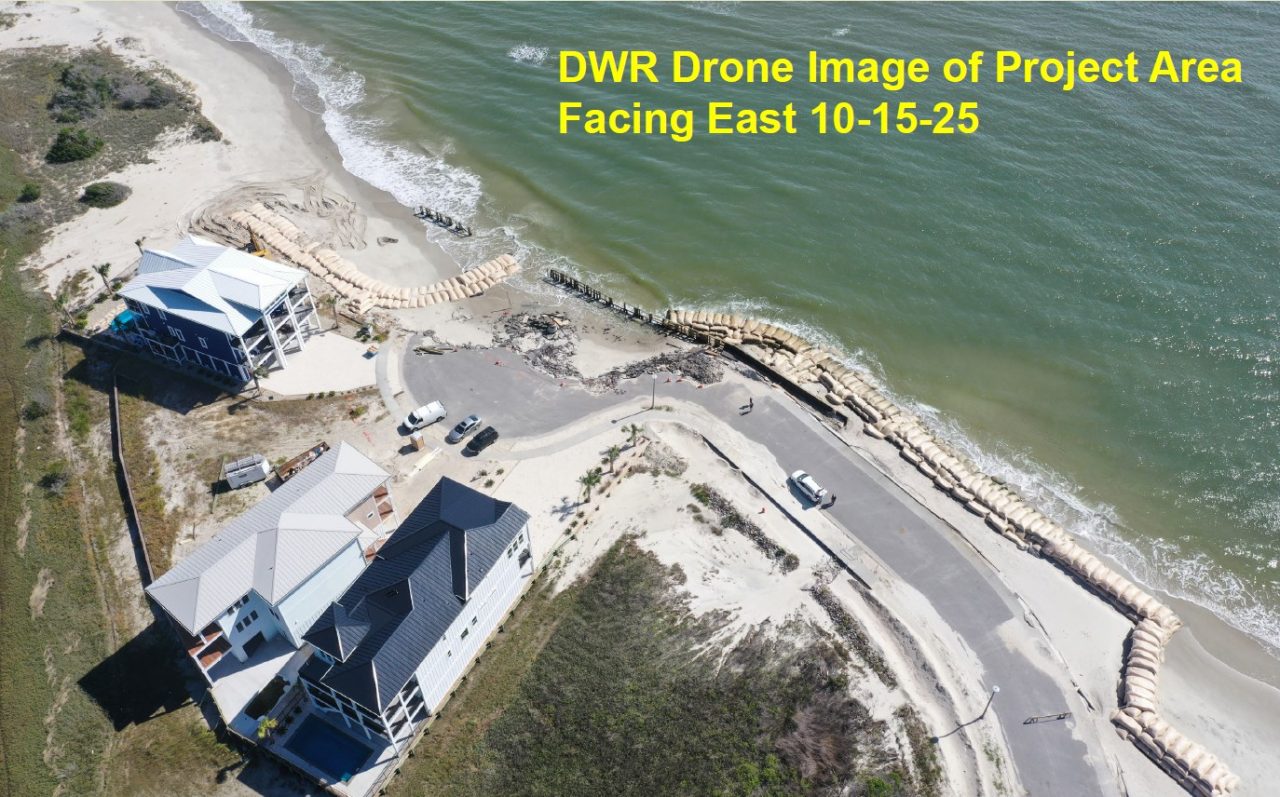
In a presentation to the commission Wednesday, North Carolina Department of Environmental Quality Assistant General Counsel Christy Goebel said that comparisons of the shoreline east of the terminal groin show that the line is moving landward.
The use of temporary sandbags “is to buy time” for existing, threatened structures while a longer-term solution can be figured out to protect those structures, she said.
Goebel noted that there have been no plans to relocate Shallotte Inlet, that the terminal groin already exists, “and the likelihood of success of beach nourishment placement so close to the inlet being dredged by the Corps’ shallow draft program and the associated available funding is uncertain.”
Baldwin rattled off a list of possible solutions, including reducing the profile of the terminal groin, removing rocks, using different size rocks to make the structure “more leaky,” modifying its location, or removing it altogether.
The commission’s motion approving the variances were made with a stipulation that the public area of the beach remain unimpeded by the sandbag wall.

